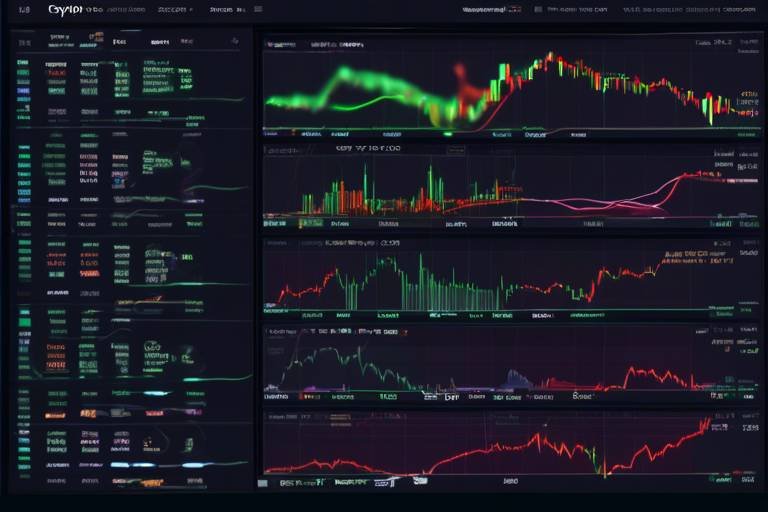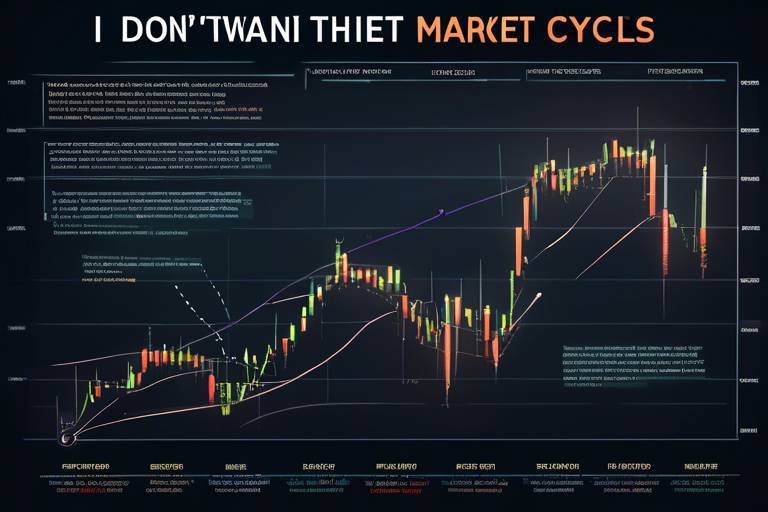Creating a Trading Journal - Why It Matters
Have you ever thought about how pilots meticulously log every flight, noting everything from weather conditions to technical issues? Well, traders should adopt a similar approach by maintaining a trading journal. A trading journal is not just a fancy notebook; it’s a powerful tool that can significantly elevate your trading game. It allows you to capture your trading experiences, analyze your decisions, and ultimately, improve your performance. Think of it as your personal trading coach, guiding you through the ups and downs of the market.
Why does it matter so much, you ask? For starters, a trading journal helps you track your trades in a structured manner. By documenting your trades, you can see patterns emerge over time. You might discover that you tend to make impulsive decisions when the market is volatile or that you perform better during certain times of the day. This kind of insight is invaluable; it transforms trading from a chaotic gamble into a more systematic approach.
Moreover, maintaining a journal fosters self-discipline. Trading can be an emotional rollercoaster, and it’s easy to get swept away by fear or greed. With a journal, you can reflect on your emotional state during trades, helping you identify triggers that lead to poor decisions. By understanding these emotions, you can develop strategies to manage them better, leading to more rational and profitable trading.
Additionally, a well-kept trading journal serves as a historical record. Imagine being able to look back at your trades from months or even years ago. It’s like having a treasure trove of knowledge at your fingertips. You can analyze what worked, what didn’t, and why. This retrospective analysis is crucial for refining your trading strategies and adapting to changing market conditions.
In summary, the significance of a trading journal cannot be overstated. It’s not just about logging trades; it’s about creating a roadmap for your trading journey. By documenting your experiences, you gain clarity, discipline, and a deeper understanding of your trading behavior. So, if you haven’t started your trading journal yet, now is the perfect time to begin. Your future self will thank you!
- What should I include in my trading journal?
Include trade details, emotional reflections, and performance metrics to gain comprehensive insights. - How often should I update my journal?
Consistency is key; aim to update your journal after every trading session. - Can a trading journal really improve my performance?
Absolutely! By analyzing your trades and emotional responses, you can make informed adjustments that lead to better outcomes.

The Importance of a Trading Journal
A trading journal serves as a critical tool for traders, allowing them to track their performance, analyze their strategies, and identify areas for improvement. Imagine trying to navigate a bustling city without a map; that’s what trading without a journal feels like. You might get to your destination, but the journey will be chaotic and filled with missed opportunities. Understanding the importance of maintaining a trading journal can enhance your trading journey tremendously.
First and foremost, a trading journal provides you with a comprehensive overview of your trading activities. By documenting every trade, you create a historical record that you can refer back to. This record is invaluable because it allows you to see patterns in your trading behavior. Perhaps you notice that you consistently make impulsive decisions when trading during certain market conditions. With this insight, you can adjust your strategies accordingly. It’s like having a personal coach who highlights your strengths and weaknesses, guiding you toward improvement.
Additionally, a trading journal fosters accountability. When you write down your trades, you are holding yourself responsible for your decisions. This accountability can lead to more disciplined trading practices. For instance, if you know you have to write down the reasons for entering a trade, you might think twice before making a hasty decision. It’s similar to keeping a food diary when trying to eat healthier; when you see your choices laid out in front of you, you become more mindful of what you consume.
Moreover, a trading journal enhances your analytical skills. As you regularly review your entries, you’ll develop a knack for spotting trends and making data-driven decisions. You can analyze your win/loss ratio, average profit per trade, and even your emotional state during trades. For example, you might discover that your most profitable trades occurred when you felt calm and collected, while your losses often coincided with feelings of anxiety or excitement. This self-awareness can be a game-changer, allowing you to tailor your trading approach to maximize profits and minimize losses.
In summary, the importance of a trading journal cannot be overstated. It is not just a record-keeping tool; it is a powerful instrument for personal and professional growth in trading. By providing insights into your trading behavior, holding you accountable, and enhancing your analytical skills, a trading journal can lead to better decision-making and ultimately, greater success in the markets. So, if you haven’t started one yet, now is the perfect time to begin your journaling journey!

Key Components of a Trading Journal
A well-structured trading journal is like a roadmap for your trading journey. It’s not just about keeping track of numbers; it’s about understanding your decisions, refining your strategies, and ultimately becoming a better trader. So, what exactly should you include in your journal? Here are some key components that will transform your journaling experience and help you gain valuable insights into your trading habits.
First and foremost, documenting trade details is crucial. This includes specifics such as the entry and exit points of each trade, the size of your position, and the market conditions at the time. By recording these details, you create a comprehensive history that allows you to look back and analyze your decisions. It’s like having a detailed playbook that you can refer to whenever you need to refine your strategy. For instance, you might discover that you tend to exit trades too early during volatile market conditions, which could lead to missed opportunities. With this information at your fingertips, you can make more informed choices in the future.
Another vital aspect of your trading journal is the inclusion of emotional reflections. How did you feel during the trade? Were you anxious, confident, or perhaps overconfident? Recognizing the emotional rollercoaster that comes with trading can help you identify patterns in your behavior. For example, if you notice that you tend to make impulsive decisions when feeling anxious, you can work on strategies to manage those emotions. This self-awareness is invaluable, as it leads to better emotional control and ultimately enhances your trading performance.
In addition to trade details and emotional reflections, tracking performance metrics is essential. This involves monitoring key indicators such as your win/loss ratio, average return per trade, and overall profitability. By keeping tabs on these metrics, you can objectively assess your trading effectiveness over time. Consider creating a simple table to visualize your performance:
| Metric | Value |
|---|---|
| Win/Loss Ratio | 70% |
| Average Return | 5% |
| Total Trades | 100 |
This quantitative analysis not only supports informed decision-making but also helps you adjust your strategies based on what the numbers reveal. Imagine trying to navigate a ship without a compass; you might end up lost at sea. Similarly, performance metrics act as your guiding stars, ensuring you stay on course.
In summary, the key components of a trading journal—trade details, emotional reflections, and performance metrics—work together to create a holistic view of your trading activities. By incorporating these elements into your journal, you’ll not only enhance your understanding of your trading behaviors but also set yourself up for long-term success. So grab that journal and start documenting your journey; the insights you gain will be well worth the effort!
- Why is a trading journal important? A trading journal helps you track your performance, analyze your strategies, and identify areas for improvement, leading to better decision-making.
- What should I include in my trading journal? Include trade details, emotional reflections, and performance metrics to gain a comprehensive understanding of your trading habits.
- How often should I update my trading journal? It's best to update your journal regularly, preferably after each trading session, to maintain consistency and accuracy.
- Can a trading journal improve my trading performance? Yes! By reflecting on your trades and emotions, you can make more informed decisions and enhance your overall trading strategies.

Recording Trade Details
When it comes to trading, the devil is in the details. Recording trade details is like keeping a diary of your financial adventures; it helps you pinpoint what works and what doesn’t. Imagine you're a detective piecing together clues from your trades. By meticulously documenting specific trade information, you can unravel the mysteries of your trading performance. Essential details to include are:
- Entry and Exit Points: Note the exact prices at which you entered and exited a trade. This information is crucial for analyzing your timing and strategy effectiveness.
- Position Size: Document how much of a particular asset you bought or sold. This helps in assessing your risk management practices.
- Market Conditions: Capture the broader market context during your trades, including news events or economic indicators that might have influenced your decisions.
But why stop there? The more granular you get, the better your insights will be. For instance, consider adding a column for the time of day you executed the trade. Did you notice that your trades tend to perform better in the morning versus the afternoon? This kind of analysis can lead to actionable insights that can significantly improve your trading strategy.
Additionally, maintaining a trade journal not only serves as a record but also as a reflective tool. After a series of trades, take a moment to look back at the details you’ve recorded. Ask yourself questions like: Were there patterns in my winning or losing trades? Did I follow my trading plan, or did emotions lead me astray? By analyzing these details, you can refine your strategies and make more informed decisions in the future.
In summary, recording trade details is more than just a task; it’s a vital part of your trading journey. It allows you to learn from your experiences, adapt your strategies, and ultimately, become a more successful trader. So, grab that journal and start documenting every detail—you'll thank yourself later!
- What should I include in my trading journal?
Your trading journal should include entry and exit points, position size, market conditions, and emotional reflections related to each trade.
- How often should I update my trading journal?
It's best to update your journal after each trade or at the end of your trading day to ensure you capture all relevant details and emotions.
- Can a trading journal really improve my performance?
Absolutely! By analyzing your past trades, you can identify patterns, mistakes, and areas for improvement, leading to better decision-making in the future.

Analyzing Emotional Responses
When it comes to trading, emotions can be a double-edged sword. On one hand, they can drive you to make bold decisions that lead to significant profits; on the other hand, they can cloud your judgment and lead to devastating losses. That’s why in your trading journal is crucial. By documenting your feelings during trades, you can uncover patterns that might be influencing your decisions—both positively and negatively.
Imagine this: you're in the heat of a trade, and suddenly, the market takes a nosedive. Your heart races, your palms sweat, and before you know it, you’ve hit the sell button out of sheer panic. Later, you might realize that this impulsive action cost you a substantial amount of money. By regularly reflecting on these emotional highs and lows in your journal, you can start to see a clearer picture of how your feelings dictate your trading behavior.
To effectively analyze your emotional responses, consider including the following elements in your journal:
- Emotional Triggers: What specific events or market conditions led to heightened emotions? Were you overly confident after a winning streak, or did fear of loss drive your decisions?
- Emotional State: Describe your feelings before, during, and after each trade. Were you anxious, excited, or calm? This will help you identify how your emotional state correlates with your trading outcomes.
- Decisions Made: Document the decisions you made during these emotional peaks. Did you stick to your trading plan, or did you deviate based on how you felt?
By capturing this information, you can start to see trends over time. For instance, if you notice that you consistently make poor decisions when feeling anxious, you might decide to implement strategies to manage that anxiety, such as taking breaks or practicing mindfulness techniques.
Moreover, understanding your emotional responses can also help you build resilience. Trading is a psychological game as much as it is a strategic one. The more you understand how emotions impact your trading decisions, the better equipped you’ll be to handle future challenges. You’ll learn to differentiate between instinctive reactions and rational decision-making, allowing you to approach each trade with a clearer mind.
In summary, analyzing emotional responses is not just a nice-to-have; it’s a critical component of your trading journal. By taking the time to reflect on your emotions and their impact on your trading decisions, you’ll not only improve your performance but also develop a deeper understanding of yourself as a trader. This self-awareness can ultimately lead to more disciplined trading and sustained success in the long run.
Q: Why should I analyze my emotional responses in trading?
A: Analyzing emotional responses helps you understand how your feelings influence your trading decisions, enabling you to make more rational choices and improve your overall performance.
Q: How can I effectively document my emotions in a trading journal?
A: Include details about your emotional state before, during, and after each trade, along with any triggers that influenced your feelings. This will help you identify patterns over time.
Q: Can emotional analysis really improve my trading success?
A: Yes! By understanding and managing your emotions, you can make more informed decisions, reduce impulsive trading, and enhance your overall trading discipline.

Tracking Performance Metrics
When it comes to trading, knowledge is power, and understanding your performance metrics is like having a treasure map that guides you toward success. Tracking these metrics is crucial because it allows you to measure your effectiveness and make informed decisions. Think of it as a fitness tracker for your trading habits; just like you wouldn't run a marathon without knowing your pace, you shouldn't trade without knowing your stats.
So, what exactly should you be tracking? Here are some key performance indicators (KPIs) that can provide valuable insights:
- Win/Loss Ratio: This metric tells you how many of your trades are winning versus losing. A ratio greater than 1 indicates more wins than losses, which is a good sign!
- Average Return: Calculating the average return on your trades helps you understand how much profit you can expect over time. This can guide your risk management strategies.
- Maximum Drawdown: This metric shows the largest drop from a peak to a trough in your trading account balance. It’s essential for understanding risk and the potential impact of losing streaks.
- Trade Frequency: Knowing how often you trade can help you assess whether you're overtrading or missing opportunities.
To make tracking these metrics easier, consider creating a simple table in your trading journal. Here’s an example of how you might structure it:
| Trade Date | Win/Loss | Entry Price | Exit Price | Return (%) |
|---|---|---|---|---|
| 2023-10-01 | Win | $50 | $60 | 20% |
| 2023-10-02 | Loss | $70 | $65 | -7.14% |
| 2023-10-03 | Win | $40 | $50 | 25% |
By regularly updating this table and analyzing the trends over time, you can gain a deeper understanding of your trading patterns. Are you more successful with certain strategies? Do your emotions impact your performance during specific trades? These insights can lead to better decision-making, allowing you to adjust your strategies accordingly.
In essence, tracking performance metrics isn’t just about numbers; it’s about creating a roadmap for your trading journey. The more you understand your performance, the better equipped you’ll be to navigate the ups and downs of the trading world.
1. Why is tracking performance metrics important for traders?
Tracking performance metrics helps traders understand their effectiveness, identify strengths and weaknesses, and make informed decisions to improve their trading strategies.
2. What are some common performance metrics to track?
Common metrics include win/loss ratio, average return, maximum drawdown, and trade frequency. These indicators provide valuable insights into trading performance.
3. How often should I update my trading journal?
It's best to update your trading journal after every trade or at least daily to ensure you capture all relevant information and insights.
4. Can I use software to track my trading performance?
Absolutely! There are many trading journal software options available that can automate the tracking process and provide detailed analytics.

Benefits of Keeping a Trading Journal
Keeping a trading journal is not just a mundane task; it’s akin to having a personal coach by your side, guiding you through the ups and downs of the trading world. Imagine having a detailed roadmap that not only tracks your trades but also highlights your emotional journey and decision-making processes. This is precisely what a trading journal does. It offers numerous benefits that can significantly enhance your trading performance and overall success.
One of the most notable advantages of maintaining a trading journal is the enhanced discipline it fosters. When you commit to documenting every trade, you become more accountable for your actions. It’s easy to get swept away in the excitement of trading, but having a journal compels you to stick to your trading plan. You start to realize that each decision has consequences, and this awareness can help you make more calculated moves in the future.
Moreover, a trading journal improves your risk management skills. By tracking your trades, you can analyze which strategies yield the best results and which ones lead to losses. This critical insight allows you to refine your approach, minimize risks, and ultimately protect your capital. For example, if you notice a pattern where certain trades consistently result in losses, you can adjust your strategy accordingly. It’s like having a mirror that reflects your trading behavior, enabling you to see what works and what doesn’t.
Another significant benefit is the improved strategy development that comes from regular journaling. As you log your trades, you’ll begin to identify trends and patterns that can inform your future strategies. This iterative process of reflecting on past trades and their outcomes allows you to evolve as a trader. You might discover that a particular trading style aligns better with your personality, or perhaps certain market conditions consistently yield better results. By analyzing this data, you can craft a more effective trading strategy tailored to your strengths.
In addition to these benefits, a trading journal serves as a valuable emotional outlet. Trading can be an emotional rollercoaster, and documenting your feelings during each trade can provide clarity. You may find that certain emotions, like fear or greed, influence your decisions more than you realize. By acknowledging these feelings in your journal, you can work on developing better emotional control, which is crucial for long-term success in trading.
To summarize, the benefits of keeping a trading journal are multifaceted. From fostering discipline and enhancing risk management to improving strategy development and providing emotional insights, a trading journal is an indispensable tool for any trader looking to elevate their game. The journey of trading is filled with challenges, but with a well-maintained journal, you can navigate these waters with greater confidence and clarity.
- How often should I update my trading journal? It's best to update your journal after every trade, or at least on a daily or weekly basis to capture your thoughts and strategies accurately.
- What should I include in my trading journal? Include trade details, emotional reflections, performance metrics, and any notes on market conditions or strategies used.
- Can a trading journal really improve my performance? Absolutely! By analyzing your past trades and emotional responses, you can identify areas for improvement and develop more effective strategies.
- Is there a specific format I should follow for my journal? While there’s no one-size-fits-all format, consistency and thoroughness are key. Choose a structure that works for you and stick to it.

Best Practices for Journaling
When it comes to maintaining a trading journal, implementing best practices can significantly enhance its effectiveness. Think of your journal as a roadmap in the vast landscape of trading; without a clear path, you might get lost. One of the most crucial practices is establishing a regular schedule for updating your journal. Just like a fitness routine, consistency is key. By setting aside specific times each day or week to reflect on your trades, you not only create a habit but also ensure that you capture your thoughts and emotions while they are fresh. This regularity fosters a deeper understanding of your trading patterns and helps you track your progress over time.
Another essential practice is to review and reflect on your journal entries regularly. Imagine you’re a detective analyzing a case; you need to look back at the evidence to draw conclusions. By revisiting your past trades, you can identify trends, mistakes, and successful strategies. This reflection allows you to learn from both your victories and failures, ultimately paving the way for continuous improvement. Consider setting aside time at the end of each week or month to go through your journal. Ask yourself questions like: What worked well? What didn’t? How did my emotions influence my decisions?
To further enhance your journaling experience, it’s beneficial to include a section dedicated to emotional reflections. Trading isn’t just about numbers; it’s also about psychology. By documenting your feelings before, during, and after each trade, you can start to see patterns in your emotional responses. Perhaps you notice that you tend to make impulsive trades when you’re feeling anxious or overly confident. Recognizing these patterns can lead to better emotional control and ultimately improve your trading performance.
Additionally, consider incorporating performance metrics into your journal. Tracking key performance indicators (KPIs) such as your win/loss ratio, average return per trade, and the duration of trades can provide valuable insights into your trading effectiveness. You can create a simple table to monitor these metrics, making it easier to visualize your progress. Here's a basic example:
| Date | Trade | Win/Loss | Return | Emotional State |
|---|---|---|---|---|
| 01/01/2023 | Trade A | Win | 5% | Confident |
| 01/02/2023 | Trade B | Loss | -3% | Anxious |
By regularly updating this table and analyzing the data, you can make informed decisions about your trading strategies. Remember, the goal of your trading journal is not just to document trades but to create a comprehensive resource that aids in your development as a trader.
In summary, adopting these best practices for journaling can transform your trading experience. By establishing a routine, reflecting on your trades, documenting your emotions, and tracking performance metrics, you create a powerful tool that can lead to improved trading results. So, grab that pen or open up your favorite journaling app, and start paving your way to trading success!
Q: How often should I update my trading journal?
A: Ideally, you should update your journal after each trading session. This helps you capture your thoughts and emotions while they are still fresh.
Q: What should I include in my trading journal?
A: Include trade details (entry and exit points, position size), emotional reflections, and performance metrics (win/loss ratio, average return).
Q: Can a trading journal really improve my performance?
A: Absolutely! A trading journal helps you identify patterns, learn from mistakes, and refine your strategies, ultimately leading to better trading outcomes.
Q: Is it necessary to track my emotions?
A: Yes! Emotions play a significant role in trading decisions. By tracking your emotional responses, you can gain insights into how they affect your trading behavior.

Setting a Regular Schedule
Establishing a regular schedule for updating your trading journal is not just a good idea; it's a game changer. Think of it like watering a plant. If you only water it once in a while, it might survive, but it won't thrive. Similarly, your trading journal needs consistent attention to grow and yield valuable insights. By setting aside dedicated time each day or week to document your trades, you create a habit that enhances your trading discipline and allows for more accurate tracking of your performance over time.
When you commit to a schedule, you’re not just jotting down notes; you’re actively engaging in a process that helps you understand your trading patterns better. For instance, you might choose to review your trades every evening after the market closes. This time can be used to reflect on what went well and what didn’t, allowing you to make adjustments for the next trading day. Alternatively, some traders prefer to set aside time at the end of the week to analyze their cumulative performance. This weekly review can help identify trends that might not be obvious in daily reflections.
To make this routine effective, consider using a structured approach. You could create a simple table in your journal that outlines:
| Date | Trade Details | Emotional State | Lessons Learned |
|---|---|---|---|
| MM/DD/YYYY | Buy/Sell, Entry/Exit Points | Excited/Anxious/Calm | What worked? What didn’t? |
This format not only helps you stay organized but also makes it easier to spot patterns over time. You might notice that your emotional state influences your trading decisions more than you realized. Perhaps you tend to make riskier trades when feeling overly confident or anxious. By keeping this schedule, you’re setting yourself up for a cycle of continuous improvement in your trading journey.
In summary, setting a regular schedule for your trading journal is essential for maximizing its benefits. It instills discipline, enhances your understanding of market behaviors, and ultimately leads to better trading outcomes. So, grab your calendar, mark those dates, and treat your journaling sessions as non-negotiable appointments with your trading success!
- How often should I update my trading journal? - Ideally, you should update your journal after every trade or at least once a day to capture your thoughts and experiences while they are fresh.
- What should I include in my trading journal? - Include trade details, emotional reflections, and performance metrics. This comprehensive approach will provide you with valuable insights.
- Can a trading journal really improve my performance? - Yes! A trading journal helps you identify patterns, mistakes, and successful strategies, leading to better decision-making and improved trading outcomes.

Reviewing and Reflecting
When it comes to trading, one of the most powerful tools at your disposal is the ability to review and reflect on your past trades. Think of it as a mirror that not only shows you what you did, but also helps you understand why you did it. This process can be enlightening, revealing patterns in your behavior that you might not have noticed otherwise. By taking the time to analyze your journal entries, you can identify not just your winning strategies, but also the mistakes that led to losses. It's like being your own coach, stepping back to evaluate your performance and make adjustments for the future.
Regularly diving into your trading journal allows you to spot trends and recurring themes. For instance, you might notice that you tend to panic sell during market dips or that you often enter trades without sufficient research. Acknowledging these tendencies is the first step toward improvement. By understanding the emotional triggers behind your decisions, you can develop strategies to mitigate their impact. This might involve setting stricter rules for yourself or even taking a break from trading when you feel overwhelmed. Just as a sports team reviews game footage to improve their performance, you can leverage your journal to enhance your trading skills.
Moreover, reflecting on your performance metrics can provide a clearer picture of your trading effectiveness. For example, consider tracking the following key performance indicators (KPIs) in your journal:
| Performance Metric | Description |
|---|---|
| Win/Loss Ratio | The ratio of winning trades to losing trades, indicating overall effectiveness. |
| Average Return | The average profit or loss per trade, helping you assess your risk/reward ratio. |
| Maximum Drawdown | The largest peak-to-trough decline in your account balance, showing risk exposure. |
By keeping an eye on these metrics, you can make data-driven decisions about your trading strategies. Are you consistently winning, but with small returns? Or are you taking too many high-risk trades that result in significant drawdowns? The answers to these questions can guide your future approaches, helping you to refine your tactics and ultimately become a more successful trader.
In conclusion, the practice of reviewing and reflecting on your trading journal is not just a routine task; it's a crucial step towards mastering the art of trading. By dedicating time to this process, you empower yourself with knowledge and insights that can transform your trading journey. So, grab that journal and start uncovering the secrets to your trading success!
- How often should I review my trading journal? It's recommended to review your journal at least once a week to stay on top of your trading patterns and progress.
- What should I include in my trading journal? Include trade details, emotional reflections, performance metrics, and any notes on market conditions that influenced your decisions.
- Can a trading journal really improve my performance? Yes! A trading journal provides insights into your behaviors, helps identify mistakes, and reinforces successful strategies, leading to overall improvement.
Frequently Asked Questions
- What is a trading journal?
A trading journal is a comprehensive record where traders document their trades, strategies, emotional responses, and performance metrics. It serves as a reflective tool to analyze past trades and improve future decision-making.
- Why should I keep a trading journal?
Keeping a trading journal is essential for tracking your performance, understanding your emotional responses, and refining your strategies. It helps you identify patterns, mistakes, and successful tactics, ultimately leading to better trading decisions.
- What should I include in my trading journal?
Your trading journal should include key components such as trade details (entry and exit points, position size), emotional reflections (how you felt during the trade), and performance metrics (win/loss ratio, average return). This information provides valuable insights into your trading habits.
- How often should I update my trading journal?
It's best to update your trading journal regularly, ideally after each trade or at the end of your trading day. Establishing a routine helps reinforce the habit and allows for more accurate tracking of your progress over time.
- Can a trading journal help with emotional control?
Absolutely! By documenting your emotional responses in your journal, you can identify how your feelings influence your trading decisions. This awareness can lead to better emotional control and improved performance in the long run.
- What are the benefits of maintaining a trading journal?
Maintaining a trading journal offers numerous benefits, including enhanced discipline, better risk management, and improved strategy development. These advantages contribute significantly to long-term trading success.
- How do I analyze my trading journal effectively?
To analyze your trading journal effectively, regularly review your entries to identify trends, mistakes, and successful strategies. Look for patterns in your emotional responses and performance metrics to make informed adjustments to your trading approach.



















